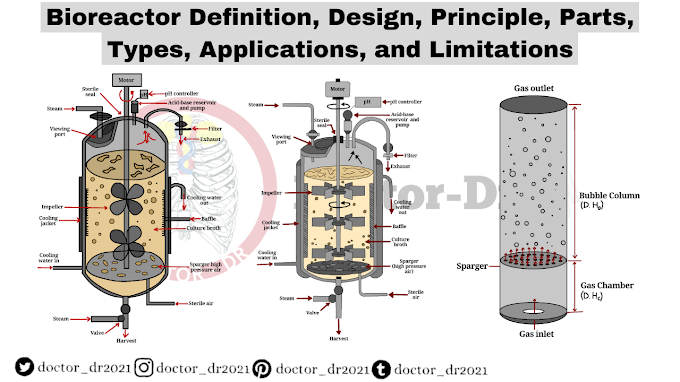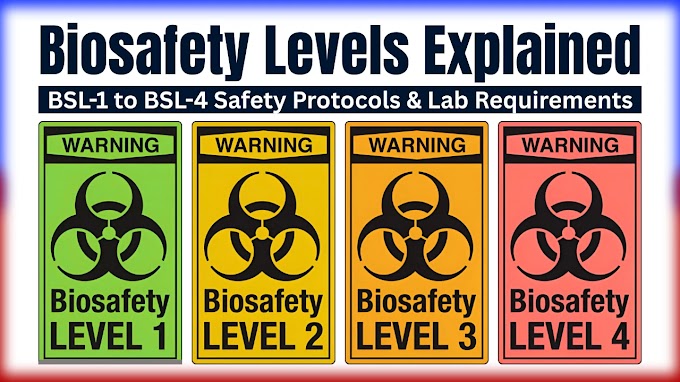Table of Contents
- Introduction to Salt Tolerance
- Objectives
- Principle of Salt Tolerance Test
- Requirements for Salt Tolerance Test
- Procedure of Salt Tolerance Test
- Result and Interpretation of Salt Tolerance Test
- Quality Control
- Precautions
- Applications of Salt Tolerance Test
- Limitations of Salt Tolerance Test
- References
Introduction to Salt Tolerance
- Salt Tolerance Test is a biochemical test used to evaluate the ability of bacteria to tolerate high salt concentrations (6.5%).
- Growth requirements vary among bacterial genera, including temperature, pH, water activity, nutritional needs, and salinity.
- Sodium ions (Na⁺) are essential for all organisms, but the required amount and salt tolerance levels differ by species.
- Halotolerant bacteria or halophiles can tolerate high salt levels, equivalent to or exceeding seawater concentration.
- Non-halophiles thrive in salt concentrations below 1.7% (<0.2 to 0.3 M).
- Slight halophiles require NaCl concentrations between 1.7% and 4.8% (0.3 to 0.7 M).
- Moderate halophiles require NaCl concentrations between 4.8% and 20% (0.7 to 3.4 M).
- Extreme halophiles thrive at NaCl concentrations between 20% and 30% (3.4 to 5.9 M).
- Halo-tolerant bacteria are non-halophiles that can tolerate up to 2.5M salt concentration.
- Salt tolerance tests are used in clinical and research laboratories for bacterial identification.
- These tests differentiate bacterial species based on their salt tolerance levels.
- Salt tolerance tests help identify halotolerant bacteria, halophiles, and extremophiles.
- The 6.5% Salt Tolerance Test differentiates Enterococcus spp. from other gamma-hemolytic (non-hemolytic) Streptococcus spp. in clinical labs.
- It aids in bacterial identification and characterization, including differentiation of Mycobacterium spp., study of Actinobacteria, research on extremophiles, and characterization of Vibrio spp.
- The 6.5% Salt Tolerance Test is widely used in diagnostic laboratories and plays a critical role in understanding bacterial adaptations to high-salinity environments.
Objectives
- To assess the capability of bacteria to withstand a high salt concentration (6.5%).
Principle of Salt Tolerance Test
Adding salt to a culture medium increases its ionic concentration, which impacts osmotic pressure and membrane permeability across bacterial cell membranes. This makes salt a selective agent, allowing only salt-tolerant or halophilic organisms to grow.
Salt-tolerant (halophilic) bacteria have evolved specific mechanisms to adapt and thrive in high-salt environments, including:
- Increasing cytoplasmic ion concentration to match the external environment.
- Accumulating compatible solutes (e.g., solutes like K⁺ ions that mimic Na⁺).
- Modifying intracellular water movement processes.
- Altering nucleotides and proteins to maintain functionality in high-salt conditions.
These adaptations enable salt-tolerant bacteria to survive in 6.5% salt concentration. In contrast, non-halophilic bacteria lack these mechanisms and are susceptible to osmotic shock, plasmolysis, and specific ion effects, leading to their inhibition or death in high-salt environments.
Requirements for Salt Tolerance Test
Culture Media
- Modified salt broth containing 6.5% NaCl is commonly used for the 6.5% salt concentration test.
- Brain Heart Infusion (BHI) Broth supplemented with 6.5% NaCl and 0.1% bromo cresol purple indicator (modified BHI Broth) is also widely utilized.
- Alternatively, Tryptic Soy Broth with 6.5% NaCl and 0.1% bromo cresol purple indicator can serve the same purpose.
Composition of Modified Salt Broth per 1000 mL
- HMH Peptone (Heart Digest): 10.00 g
- Peptone: 10.00 g
- Glucose (Dextrose): 1.00 g
- Sodium Chloride: 65.00 g
- Bromo cresol purple: 0.016 g
- Final pH: 7.2 ± 0.2 at 25°C
Preparation of Modified Salt Broth
- Weigh the required amount of modified salt broth powder (8.6 g for 100 mL water) or individual components.
- Mix with the required volume of water in a conical flask or glass bottle.
- Stir well manually or using a magnetic stirrer and heat until all components dissolve.
- Dispense 5 mL (or desired volume) of the broth into test tubes. Cap loosely or use a cotton plug.
- Autoclave at 121°C and 15 lbs pressure for 15 minutes.
- Allow the broth to cool to 40-45°C before inoculation.
Composition of HI Broth per 1000 mL
- Calf Brain Infusion (HM infusion powder): 12.50 g
- BHI Powder: 5.00 g
- Protease Peptone: 10.00 g
- Glucose (Dextrose): 2.00 g
- Disodium Hydrogen Phosphate: 2.50 g
- Sodium Chloride: 5.00 g
- Final pH: 7.4 ± 0.2 at 25°C
Preparation of Modified BHI Broth
- Measure BHI broth powder (37.0 g per 1000 mL) along with 60.0 g sodium chloride and 0.016 g bromo cresol purple.
- Add the mixture to 1000 mL of water in a conical flask or glass bottle.
- Stir and heat until all components dissolve completely.
- Dispense 5 mL (or desired volume) into test tubes, leaving caps loose or using cotton plugs.
- Autoclave at 121°C and 15 lbs pressure for 15 minutes.
- Cool to 40-45°C before inoculation.
Reagents
- Sodium Chloride (extra pure or laboratory grade).
- Bromocresol purple indicator.
Equipment
- Test tubes.
- Incubator.
- Weighing machine.
- Autoclave.
- Bunsen burner.
- Inoculating loop.
- Personal protective equipment (PPE) and general laboratory materials.
Test Organisms (Sample Bacteria)
- Positive Control: Enterococcus faecalis ATCC 29212.
- Negative Control: Streptococcus bovis ATCC 33317.
Procedure of Salt Tolerance Test
- Using a sterile inoculating loop, collect well-isolated colonies of the sample bacteria from a fresh culture (18 to 24 hours old).
- Transfer 1 to 2 loops of bacterial suspension or fresh broth culture into the test broth.
- Incubate the inoculated tubes aerobically at 35 ± 2°C for 24 hours.
- Observe the tubes for visible growth (turbidity) or a change in color.
- If no growth is observed, continue incubating the tubes.
- Check for turbidity or color change at 48 and 72 hours.
Result and Interpretation of Salt Tolerance Test
- Positive Result: Bacterial growth, indicated by increased turbidity and/or a color change in the broth from purple to yellow.
- Typically observed within 24 hours but may take up to 48–72 hours for certain Enterococci strains, and up to 14 days for Mycobacterium spp. and Actinobacteria.
- Negative Result: No bacterial growth (no turbidity) and no color change in the medium.
Quality Control
- Enterococcus faecalis ATCC 29212 exhibits increased turbidity and a yellow color change in the medium after 24 hours of incubation.
- Streptococcus bovis ATCC 33317 shows neither growth nor any color change, even after 72 hours of incubation.
Common Salt Tolerant Pathogenic Cocci Bacteria
Enterococcus species, Staphylococcus aureus, Streptococcus agalactiae
Precautions
- When adding salt to the ready-made culture medium, consider the amount of NaCl already in the medium and adjust accordingly to achieve a final NaCl concentration of 6.5%.
- Do not report negative results at 24 hours; re-incubate for up to 72 hours before concluding negative results.
- Use a light inoculum, as a heavy inoculum can cause turbidity, leading to a false positive result.
Applications of Salt Tolerance Test
- Distinguishing Enterococcus spp. from other non-hemolytic Streptococci/Group D Streptococci (non-enterococci).
- Differentiating Aerococcus spp. (salt-tolerant at 6.5%) from other similar cocci, such as Stomatococcus and Helococcus (both non-salt tolerant).
Limitations of Salt Tolerance Test
- It is not a definitive test and should be complemented with other biochemical tests for accurate bacterial genus and species identification.
- Certain β-hemolytic Streptococci (e.g., Streptococcus agalactiae) may also grow in 6.5% NaCl, potentially leading to confusion in identifying Enterococci.
- Minimal growth without acid production can complicate the interpretation of turbidity.
- If bacteria grow without producing acid, the medium's color remains unchanged, making it challenging to interpret results.
- A minimum of 72 hours is required before reporting a negative result.
References
- Leber, Amy L., editor in chief. (2016). Clinical Microbiology Procedures Handbook (Fourth edition). Washington, DC: ASM Press.
- Tille, P. M., & Forbes, B. A. (2014). Bailey & Scott’s Diagnostic Microbiology (13th edition). St. Louis, Missouri: Elsevier.
- Vreeland, R. H. (1987). Mechanisms of halotolerance in microorganisms. Critical Reviews in Microbiology, 14(4), 311-356. doi: 10.3109/10408418709104443. PMID: 3308318.
- Greenway, H., & Munns, R. (1980). Mechanisms of salt tolerance in nonhalophytes. Annual Review of Plant Physiology, 31, 149-190. doi: 10.1146/annurev.pp.31.060180.001053.
- Edbeib, M., Wahab, R., & Huyop, F. (2016). Halophiles: Biology, adaptation, and their role in the decontamination of hypersaline environments. World Journal of Microbiology and Biotechnology, 32, 135. doi: 10.1007/s11274-016-2081-9.
- Peters, A. C., Thomas, L., & Wimpenny, J. W. (1991). Effects of salt concentration on bacterial growth on plates with gradients of pH and temperature. FEMS Microbiology Letters, 61(2-3), 309-314. doi: 10.1016/0378-1097(91)90571-Q. PMID: 1903754.
- Conville, P. S., & Witebsky, F. G. (1998). Variables affecting results of the sodium chloride tolerance test for identification of rapidly growing mycobacteria. Journal of Clinical Microbiology, 36(6), 1555-1559. https://doi.org/10.1128/JCM.36.6.1555-1559.1998
- Salt Tolerance Test: Principle, Procedure, and Result (researchtweet.com)
- Salt Tolerance Test – Principle, Procedure, Uses and Interpretation (microbiologyinfo.com)
- What Are Halophiles – Water Content – Bedford Astronomy Club
- How Does Salt Concentration Affect Bacterial Growth? – WisdomAnswer
- Salt Tolerance Test Principle, Purpose, Procedure, Result (microbiologynote.com)
- Salt Tolerance Test: Introduction, Principle, Procedure, and Result (universe84a.com)
- Streptococci, Groups A, B, and D. Enterococcus faecalis (microbiologybook.org)
- Temperature-Salt 2019 (ysu.edu)









